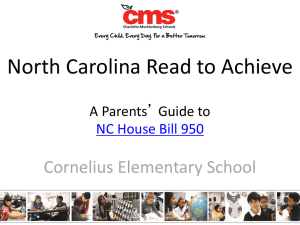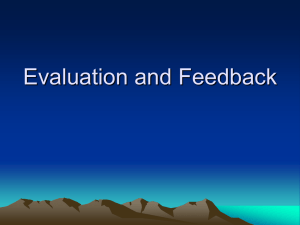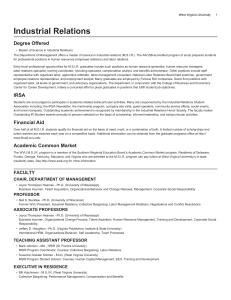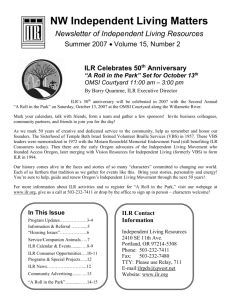Facts & Myths About Advanced L2
advertisement
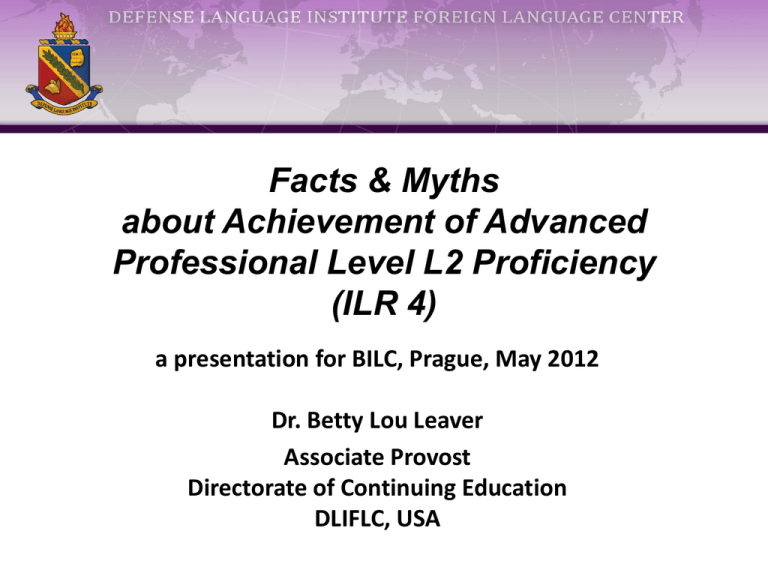
Facts & Myths about Achievement of Advanced Professional Level L2 Proficiency (ILR 4) a presentation for BILC, Prague, May 2012 Dr. Betty Lou Leaver Associate Provost Directorate of Continuing Education DLIFLC, USA Organizational Information DLIFLC has four directorates, administered by the Provost: • • • • Directorate of Undergraduate Education Directorate of Continuing Education Directorate of Language Science & Technology Directorate of Evaluation & Standards Note: Provost reports to assistant commandant & commandant, who oversee military structure. Organizational Information, cont’d The Directorate of Continuing Education has five schools, 37 sites: • Distance Learning (sustainment & enhancement) • Field Support (non-linguists) • Extension Programs (lifelong learning for linguists) • Resident Education (enhancement) • Educational Support Services – DAC (Diagnostic Assessment Center/DA specialist trainers) – ASC (Academic Support Center) – Command Language Program (360+) Sources of Information on Students Achieving ILR 4 This presentation is based on: 1. Experience with and feedback from upper level at – – – – Foreign Service Institute (US Department of State) NASA Defense Language Institute University of Jordan (UJ) 2. Formal research funded by – National Foreign Language Center – Conference on College Composition and Communication (National Council of Teachers of English) Defining Advanced Professional Level (ILR 4) • Usually equivalent to WEHANS; would not be mistaken for cultural native [ILR 3 over-self-assess; ILR 4 self-aware] • Wide-ranging control of structure; nonnative slip may occur • Language rarely hinders in any task; can set interpersonal official, semi-official and non-professional tone [tailoring] • Endurance & sophisticated verbal strategies: lectures, conferences, debates • Native social & circumstantial knowledge; not under all conditions • Shifts of subject matter & tone • Understands standard and major dialects [& street talk] About the Students Quiz: Which of the following characteristics have been associated with near-native L2 proficiency? • Desire to integrate into the culture • Motivated by compliments • Tenacity • High grades • Quick learner • Good ear • Desire to do a good job • Multilingual neighborhood in youth • Multilingual home • Time abroad • Young age at onset • Global learning style • Female • Marriage to a native speaker Answers to Quiz in Bold • Desire to integrate into the culture • Motivated by compliments • Tenacity • High grades • Quick learner • Good ear • Desire to do a good job • Multilingual neighborhood in youth • Multilingual home • Time abroad • Young age at onset • Global learning style • Female • Marriage to a native speaker Student Stories • Student A (ectenic learner) – – – – – – Spanish US government classes: FAO Duty in Colombia Community work Voracious reader Motivation: Instrumental (lawyer) • Student B (ectenic learner) – – – – – French University classes Study for degree in France Voracious reader Motivation: Vicarious (married to a French person) More Student Stories • Student C (synoptic learner) – – – – – – Russian University classes No experience abroad (two weeks after Level 4) Community work Job use (broadcaster) Motivation: Intrinsic • Student D (synoptic learner) – – – – German University classes Job abroad (publishing/editing English) Motivation: Vicarious (married a German), intrinsic Even More Student Stories • Student E (synoptic learner) – – – – – – – – – – Russian After school tutor: Literature University classes: C average US government classes Job use Degree work in country Voracious reader & writer Discouraged by teachers Motivation: tenacity Demotivator: linguistic & pronunciation error • Student F (synoptic learner) – – – – – – – – – – French Childhood community L2 High school: creative writing University classes – A/A+ Job use No time ever spent abroad Voracious reader & writer Encouraged by teachers Motivation: intrinsic Demotivator: criticism for regional accent About the Upper Level DLI Programs Success/Achievement • Courses at DLI: • Nine languages, 1-10 students per group • Refresher, intermediate, advanced, DTRA, extension • Course completion at graduation standard: • 95% enrolling with prerequisites (ability not considered) • 85% of all students • 54% exceed graduation standards • Negligible attrition (only those pulled by DTRA) Results Resident Education Graduation Statistics (Refresher/Int/Adv) 100% Graduation Rate 90% 80% 70% 60% 50% 2008 2009 2010 2011 2012 Syllabi • • • • • • Highly individualized/diagnostically oriented Content-based Language & culture focus Task-based authenticity, research, & realism Exclusively authentic; limited/no textbooks Formal and informal immersion Course Content • Subject matter core (language through content) • Political, social, and historical events • Immersion programs – University classes (integrated or duplicated) – Recyling vocab & grammar through all skills – Related excursions & exercises (e.g., surveys) • Integrated skills • Focus on process and product – Projects & portfolios – Presentations Language & Culture Focus • “Grammar in the wild” • Grammar manipulation through genre shift • Language exercises – Packaging & re-packaging – Simplification of thought – Embellishment of language • Sociolinguistics & pragmatics [tailoring] • Reading between the lines & beyond the text Task-Based Realism • • • • • Briefings to visitors Teaching lower levels Analyses & project reports Student surveys (immersion programs) True real-life tasks – DTRA translations – Assistance to ROK Lower Level Task vs. Upper Level Task • Weather report – Lower: Decide what to wear/pack – Upper: Parody the speaker; produce a local report • Biographical interviews – Lower: Pairs interview each other & report out – Upper: Students analyze professional interview, then interview each other & report out, using culturally appropriate text structure • Grammar exercise: relative clauses – Lower: identify the clauses & give alternative – Upper: rewrite in a different genre Lower Levels vs. Upper Levels • • • • • • • • Focus on form(s) vs. focus on text Using context vs. refined knowledge Intensive reading vs. extensive reading Teacher direction vs. self-direction Rote memory vs. associative memory Immersions in class & in country Requests for repetition vs. elicitation Defossilization (upper): structure & lexicon (automatic & correct); strategies; autonomy; pragmatics & sociolinguistics; level Some References for Level 4 (Few Publications to Date) • CDLC: – Journal for Distinguished Language Proficiency (6 volumes) – Teaching and Learning to Near-Native Levels of Second-Language Proficiency (6 volumes of conference proceedings, 2003-2008) – What Works: Helping Students Reach Native-Like Second-Language Competence (MSI Press, 2006) • Leaver: – Achieving Native-Like Second Language Proficiency (MSI Press, 2003) – Individualized Study Plans for Very Advanced L2 Learners (MSI Press, 2003) • Leaver, Ehrman, & Shekhtman. Achieving Success in Second Language Acquisition (Cambridge University Press, 2005, chapter 10) • Leaver & Shekhtman, eds. Developing Professional Level Foreign Language Proficiency (Cambridge University Press, 2003) • Shekhtman. Working with Advanced Students (MSI Press, 2003) Some More References (For Lower Levels: 2+ and 3) • Byrnes. Advanced Language Learning: The Contribution of Halliday and Vygotsky (Continuum, 2008) • Byrnes, Heather, & Sprang, eds. Educating for Advanced Foreign Language Capacities: Constructs, Curriculum, Instruction, Assessment (Georgetown University Press, 2006) • Byrnes, Maxim, & Magnan. Advanced Foreign Language Learning, 2003 AAUSC Volume, Issues in Language Program Direction (Heinle, 2003) • Ortega & Byrnes. The Longitudinal Study of Advanced L2 Capacities (Routledge, 2008) • Watch for Brown & Bown, forthcoming, possibly Georgetown University Press, possible title: To 3 and Beyond Centers for Higher Level Proficiency Studies • Center for the Advancement of Distinguished Language Proficiency, San Diego State University (ILR 4) • Center for Advanced Language Proficiency, Penn State University (ILR 2-3) Note: These are foreign language centers and generally do not address English. Questions?





